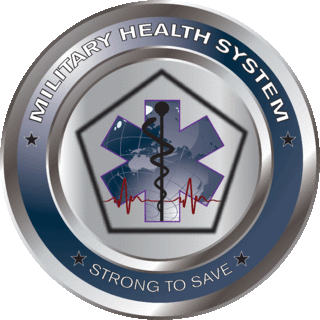
Health informatics is the field of science and engineering that aims at developing methods and technologies for the acquisition, processing, and study of patient data, which can come from different sources and modalities, such as electronic health records, diagnostic test results, medical scans. The health domain provides an extremely wide variety of problems that can be tackled using computational techniques.

The terms medical record, health record, and medical chart are used somewhat interchangeably to describe the systematic documentation of a single patient's medical history and care across time within one particular health care provider's jurisdiction. A medical record includes a variety of types of "notes" entered over time by healthcare professionals, recording observations and administration of drugs and therapies, orders for the administration of drugs and therapies, test results, x-rays, reports, etc. The maintenance of complete and accurate medical records is a requirement of health care providers and is generally enforced as a licensing or certification prerequisite.

An electronic health record (EHR) is the systematized collection of patient and population electronically stored health information in a digital format. These records can be shared across different health care settings. Records are shared through network-connected, enterprise-wide information systems or other information networks and exchanges. EHRs may include a range of data, including demographics, medical history, medication and allergies, immunization status, laboratory test results, radiology images, vital signs, personal statistics like age and weight, and billing information.
The Composite Health Care System (CHCS) is a medical informatics system designed by Science Applications International Corporation (SAIC) and used by all United States and OCONUS military health care centers. In 1988, SAIC won a competition for the original $1.02 billion contract to design, develop, and implement CHCS.
The Clinical Information Technology Program Office (CITPO) is an acquisition office for centrally managed Military Health System (MHS) clinical information technology systems that support the delivery of health services throughout the MHS. CITPO is staffed by members of the Armed Services' medical departments and a government civilian workforce, working together as a matrixed organization to meet project goals and objectives.
A clinical decision support system (CDSS) is a health information technology, provides clinicians, staff, patients, or other individuals with knowledge and person-specific information, intelligently filtered or presented at appropriate times, to enhance health and health care. CDS encompasses a variety of tools to enhance decision-making in the clinical workflow. These tools include computerized alerts and reminders to care providers and patients; clinical guidelines; condition-specific order sets; focused patient data reports and summaries; documentation templates; diagnostic support, and contextually relevant reference information, among other tools. A working definition has been proposed by Robert Hayward of the Centre for Health Evidence: "Clinical decision support systems link health observations with health knowledge to influence health choices by clinicians for improved health care". CDSSs constitute a major topic in artificial intelligence in medicine.

Cerner Corporation is an American supplier of health information technology (HIT) services, devices, and hardware. As of February 2018, its products were in use at more than 27,000 facilities around the world. The company had more than 29,000 employees globally, with over 13,000 in Kansas City, Missouri. Its headquarters are in the suburb of North Kansas City, Missouri.

Tricare, formerly known as the Civilian Health and Medical Program of the Uniformed Services (CHAMPUS), is a health care program of the United States Department of Defense Military Health System. Tricare provides civilian health benefits for U.S Armed Forces military personnel, military retirees, and their dependents, including some members of the Reserve Component. Tricare is the civilian care component of the Military Health System, although historically it also included health care delivered in military medical treatment facilities.
An enterprise master patient index or enterprise-wide master patient index (EMPI) is a patient database used by healthcare organizations to maintain accurate medical data across its various departments. Patients are assigned a unique identifier, so they are represented only once across all the organization's systems. Patient data can include name; gender; date of birth; race and ethnicity; social security number; current address and contact information; insurance information; current diagnoses; and most recent date of hospital admission and discharge.
MEDCIN, a system of standardized medical terminology, is a proprietary medical vocabulary and was developed by Medicomp Systems, Inc. MEDCIN is a point-of-care terminology, intended for use in Electronic Health Record (EHR) systems, and it includes over 280,000 clinical data elements encompassing symptoms, history, physical examination, tests, diagnoses and therapy. This clinical vocabulary contains over 38 years of research and development as well as the capability to cross map to leading codification systems such as SNOMED CT, CPT, ICD-9-CM/ICD-10-CM, DSM, LOINC, CDT, CVX, and the Clinical Care Classification (CCC) System for nursing and allied health.
BHIE is a series of communications protocols developed by the US Department of Veterans Affairs (VA). It is used to exchange healthcare information between VA healthcare facilities nationwide and between VA facilities and Department of Defense healthcare facilities.
Patient portals are healthcare-related online applications that allow patients to interact and communicate with their healthcare providers, such as physicians and hospitals. Typically, portal services are available on the Internet at all hours of the day and night. Some patient portal applications exist as stand-alone web sites and sell their services to healthcare providers. Other portal applications are integrated into the existing web site of a healthcare provider. Still others are modules added onto an existing electronic medical record (EMR) system. What all of these services share is the ability of patients to interact with their medical information via the Internet. Currently, the lines between an EMR, a personal health record, and a patient portal are blurring. For example, Intuit Health and Microsoft HealthVault describe themselves as personal health records (PHRs), but they can interface with EMRs and communicate through the Continuity of Care Record standard, displaying patient data on the Internet so it can be viewed through a patient portal.
VistAWeb is a portal accessible through CPRS, the graphical user interface for the Veterans Health Information Systems and Technology Architecture (VistA), the electronic health record used throughout the United States Department of Veterans Affairs (VA) medical system.

The Military Health System (MHS) is a form of nationalized health care operated within the United States Department of Defense that provides health care to active duty, Reserve component and retired U.S. Military personnel and their dependents.

The Department of Defense Serum Repository is a biological repository operated by the United States Department of Defense containing over 50,000,000 human serum specimens, collected primarily from applicants to and members of the United States Uniformed Services.

The Veterans Health Information Systems and Technology Architecture (VISTA) is a health information system deployed across all veteran care sites in the United States. VISTA provides clinical, administrative, and financial functions for all of the 1700+ hospitals and clinics of the Veterans Health Administration VISTA consists of 180 clinical, financial, and administrative applications integrated within a single transactional database.
The Clinical Care Classification (CCC) System is a standardized, coded nursing terminology that identifies the discrete elements of nursing practice. The CCC provides a unique framework and coding structure. Used for documenting the plan of care; following the nursing process in all health care settings.
Clinical point of care (POC) is the point in time when clinicians deliver healthcare products and services to patients at the time of care.
The Health Information Technology for Economic and Clinical Health Act, abbreviated HITECH Act, was enacted under Title XIII of the American Recovery and Reinvestment Act of 2009. Under the HITECH Act, the United States Department of Health and Human Services (U.S.HHS) resolved to spend $25.9 billion to promote and expand the adoption of health information technology. The Washington Post reported the inclusion of "as much as $36.5 billion in spending to create a nationwide network of electronic health records." At the time it was enacted, it was considered "the most important piece of health care legislation to be passed in the last 20 to 30 years" and the "foundation for health care reform."
Federal and state governments, insurance companies and other large medical institutions are heavily promoting the adoption of electronic health records. The US Congress included a formula of both incentives and penalties for EMR/EHR adoption versus continued use of paper records as part of the Health Information Technology for Economic and Clinical Health (HITECH) Act, enacted as part of the, American Recovery and Reinvestment Act of 2009.







